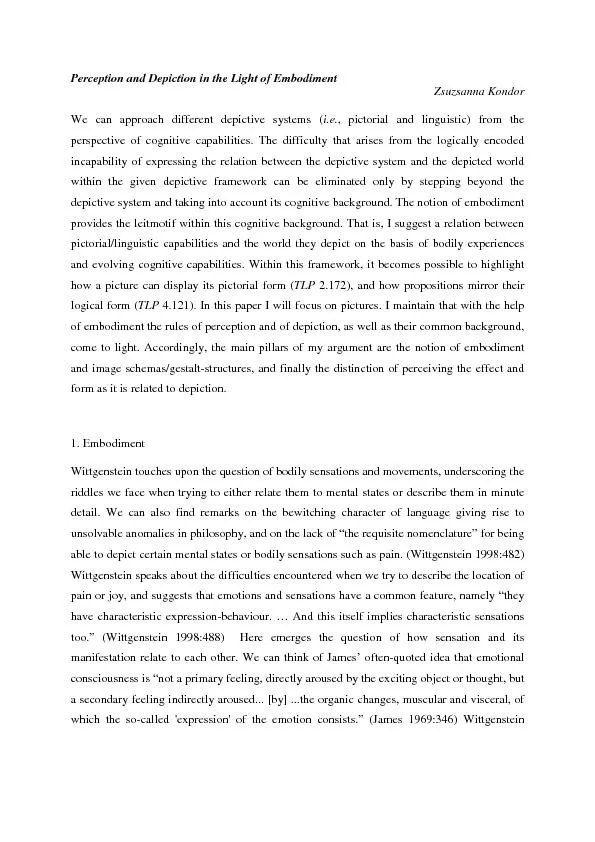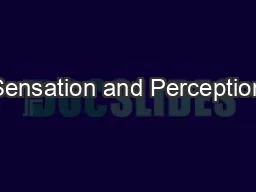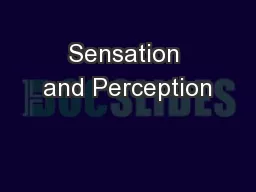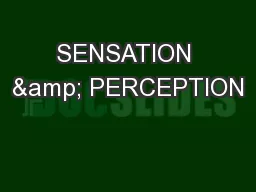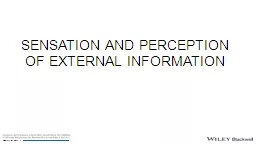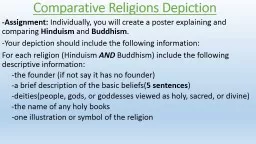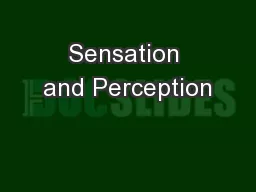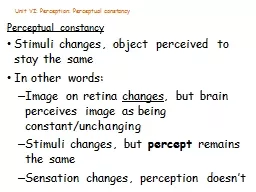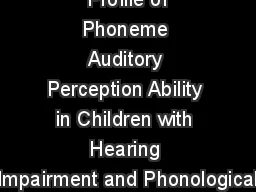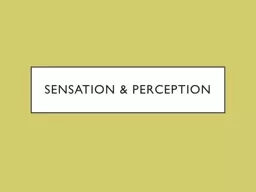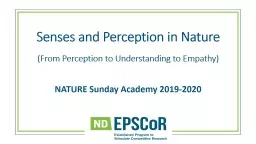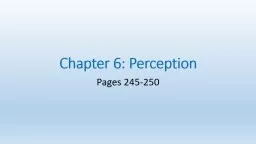PDF-Perception and Depiction in the Light of EmbodimentZsuzsanna Kondor We
Author : jane-oiler | Published Date : 2016-11-18
1 Embodiment Wittgenstein touches upon the question of bodily sensations and movements underscoring the riddles we face when trying to either relate them to mental
Presentation Embed Code
Download Presentation
Download Presentation The PPT/PDF document "Perception and Depiction in the Light of..." is the property of its rightful owner. Permission is granted to download and print the materials on this website for personal, non-commercial use only, and to display it on your personal computer provided you do not modify the materials and that you retain all copyright notices contained in the materials. By downloading content from our website, you accept the terms of this agreement.
Perception and Depiction in the Light of EmbodimentZsuzsanna Kondor We: Transcript
Download Rules Of Document
"Perception and Depiction in the Light of EmbodimentZsuzsanna Kondor We"The content belongs to its owner. You may download and print it for personal use, without modification, and keep all copyright notices. By downloading, you agree to these terms.
Related Documents

